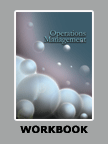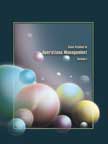Global Supply Chain Management: Best Practices at Li & Fung Limited




|
|
ICMR HOME | Case Studies Collection
Case Details:
Case Code : OPER047
Case Length : 15 Pages
Period : 1996-2004
Organization : Li and Fung
Pub Date : 2005
Teaching Note :Not Available
Countries : Hong Kong, US, Europe
Industry : Trading, FMCG
To download Global Supply Chain Management: Best Practices at Li & Fung
Limited case study
(Case Code: OPER047) click on the button below, and select the case from the list of available cases:

Price:
For delivery in electronic format: Rs. 400;
For delivery through courier (within India): Rs. 400 + Rs. 25 for Shipping & Handling Charges
» Operations Case Studies
» Case Studies Collection
» ICMR HOME
» View Detailed Pricing Info
» How To Order This Case
» Business Case Studies
» Case Studies by Area
» Case Studies by Industry
» Case Studies by Company
Please note:
This case study was compiled from published sources, and is intended to be used as a basis for class discussion. It is not intended to illustrate either effective or ineffective handling of a management situation. Nor is it a primary information source.
|
|
<< Previous
Background Note
|
The history of Li & Fung goes back to the early 1900s, making it the oldest
trading company in Hong Kong. The company was founded in 1906 by Fung Pak-Liu
(Pak-Liu) and Li To-ming (To-ming) in Guangzhou (South China) and was one of the
first Chinese-owned export companies. Trade in China at that time was controlled
by foreign commercial houses. Li & Fung began operations by exporting porcelain
and silk, mainly to the US. It later expanded its product portfolio to include
bamboo, jade, ivory, rattan ware, fireworks and handicrafts.
During the early 1900s, since US buyers did not know Chinese and Chinese sellers
did not know English, traders who could speak both the languages became
essential mediators between buyers and sellers.
|
|
Li & Fung, being one among this lot, prospered, earning commissions as high as
15% on each export deal. Li & Fung was formally established in Hong Kong as
a limited company
in 1937.
|
|
World War II disrupted trading in the early 1940s, forcing Li & Fung to
cease trading for some years. In 1943, Pak-Liu passed away. Shortly after
the end of the war, To-ming, who had been a silent partner, retired and sold
his stake to Pak-Liu's family. With this, the Fung family became sole owners
of Li & Fung. In 1949, Pak-Liu's son, Fung Hon-chu (Hon-chu), restarted trading operations
in Hong Kong, which had come under British control. Hon-chu was instrumental
in leading Li & Fung into the new era. The trading business picked up
momentum in Hong-Kong during the mid 1900s, driven by the influx of
refugees, which transformed China into a manufacturing economy that exported
labour intensive consumer products. |
Li & Fung began exporting consumer products such as garments,
electronics, plastic flowers and toys and was soon Hong Kong's biggest exporter.
By the early 1970s, the trading business in Hong Kong began to struggle owing to
stiff competition from other manufacturing economies in Asia such as Taiwan and
Singapore. Trading margins also went down significantly to 3%, as buyers and
sellers became comfortable dealing directly with each other, doing away with
intermediaries.
Under these circumstances, Hon-chu called his sons - William and Victor Fung
(Victor) - back home from the US. Victor was teaching at the Harvard Business
School and William had just finished his MBA from the same business school.
Despite their friends' warning that trading would die out in a decade, the two
brothers returned to Hong Kong to join their family firm...
Excerpts >>
|
|



